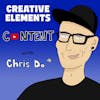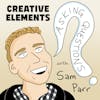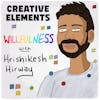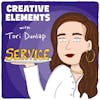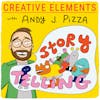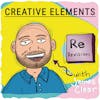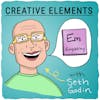
Wes Kao is co-founder of Maven, the first platform for cohort-based courses. She also co-founded the altMBA with Seth Godin.
Wes Kao is co-founder of Maven, the first platform for cohort-based courses. Maven helps creators build a cohort-based course and deliver an incredible student experience at scale.
She helped build cohort-based courses for Outlier.org (from the co-founder of MasterClass), David Perell’s Write of Passage, Tiago Forte’s Build a Second Brain, Section4/Professor Scott Galloway, and Morning Brew.
Previously, Wes was the co-founder of the altMBA. Under her leadership, the altMBA grew from zero to 550 cities in 45 countries in three years. She designed the altMBA's beloved coaching system, grew the global community, built the marketing engine, and built a team of 40 people to support rapid scaling.
In this episode, we talk about Wes’s early experiences building cohort-based courses, how you can decide whether teaching a CBC is right for you, the frameworks you can use to design your course curriculum, and why Rigorous Thinking helps her to build quickly without wasting time on failed experiments.
Wes's piece on Spiky Points of View
Follow Creative Elements on Instagram
Full transcript and show notes
***
SPONSORS
***
IF YOU LOVE CREATIVE ELEMENTS
Subscribe to weekly episode emails
Leave a review on Apple Podcasts
***
ABOUT JAY CLOUSE
Subscribe to my newsletter, Creative Companion
***
FOR PODCASTERS
Enroll in my podcasting workshop
Enroll in my course on podcasting, Podcast Like The Pros
***
PODGLOMERATE NETWORK
This show is a part of the Podglomerate network, a company that produces, distributes, and monetizes podcasts. We encourage you to visit the website and sign up for our newsletter for more information about our shows, launches, and events. For more information on how The Podglomerate treats data, please see our Privacy Policy.
Since you're listening to Creative Elements, we'd like to suggest you also try other Podglomerate shows surrounding entrepreneurship, business, and careers like Rocketship.fm and Freelance to Founder.
Learn more about your ad choices. Visit megaphone.fm/adchoices
Wes Kao 00:00
I think a lot of people think of experiments as free, right? Like, oh, if I just try this, it doesn't cost me anything. I'm just testing it out. I'm throwing it out there. I'm throwing spaghetti on the wall, but it actually does cost you. Experiments are actually not free because your time is not.
Jay Clouse 00:14
Welcome to Creative Elements, a show where we talk to your favorite creators and learn what it takes to make a living from your art and creativity. I'm your host, Jay Clouse. Let's start the show. Hello, welcome back to another episode of Creative Elements. Last week, I reaired an episode with Tim Urban from January of 2021, more than a year ago. And you know what, I got a ton of incredible feedback from people who had never heard that episode before. I had all this anxiety about whether or not people would be upset about me airing a past episode rather than a new episode. And that episode got as many if not more, downloads, plays, and positive notes as any other episode. And here's the other side of that, my reairing that episode, I extended my own production pipeline, I got to relax for the weekend with my groomsmen getting our suits fitted for the wedding. And it was a really important reminder of what Andy J. Pizza calls playing your hits.
Andy J Pizza 01:30
One of the big principles for social media that I'm trying to get people to embrace is that you are not a robot, you know, you are not a content generating machine, okay? Like if you try to post new artwork all the time, every day, several times a week, you will burn out it's not realistic. And in fact, the people that are crushing it on social media aren't doing that.
Jay Clouse 01:58
We get so caught up in feeling like we need to create something new all the time that we forget about all the great work we've done in the past that may have gone unnoticed by most of the people who even follow us. So I'd encourage you to think about some of your best work. And instead of creating something new, what if you reshare that? Maybe it was a post on Instagram that didn't get as much engagement as you expected or a tweet that you loved but flopped. What if you just try it again? What if you improved upon it, rather than create something totally new. Iteration and improvement is something that today's guest cares about a lot. Her name is Wes Kao. Wes is the co-founder of Maven, the first platform for cohort based courses or CBCs, as you'll hear me say a lot today. We'll talk more about cohort based courses here in a second. But to understand what a cohort based course is, you need to understand what a cohort based course is not. And Wes' experience with online courses starts about a decade ago,
Wes Kao 02:59
Around 2014, the main form of online learning was MOOCs, Massive Open Online Courses. So these are evergreen self paced on demand courses, like Udemy, LinkedIn Learning, Coursera, Skillshare, where you basically have a series of videos that you watch, and you watch them yourself on your own time.
Jay Clouse 03:20
MOOCs, these Massive Open Online Courses, you may hear them call self paced courses or pre-recorded courses, were just about how every online creator was educating their audience at scale back in 2014. One of the most innovative creators in the world of online education was and still is Seth Godin, my guest on the very first episode of Creative Elements. In 2014, long before Wes was the co-founder of Maven, she was special projects lead for Seth Godin HQ, where she produced best selling MOOCs on Udemy. But despite the success of the self paced courses she and Seth were developing, they weren't satisfied with the impact those courses were having on their students. As you may know, completion rates for self paced courses just aren't very good. And they wanted to change that. But no one had really found a better way yet.
Wes Kao 04:10
The place that we started was, what if we just literally did the opposite of what MOOCs do? Like let's start there and brainstorm and see what we get. We end up coming up with the ultimate game, you know, and that really kicked off the category of core based courses. This type of course that is community driven, there's a lot more accountability, there's a lot more hands on doing. It's not as much passive content consumption, as it is hands on practice. Price in a way that requires students have skin in the game. Usually courses on Udemy are $10 to $20. And so you know, if it sucks or if you don't show up, if you quit partway through no big deal, but if you're paying between $500 to $5,000, for a core based course, you're usually a lot more committed.
Jay Clouse 04:58
Yes, you heard that right. It's actually very common now for these CBCs cohort based courses, the cost anywhere from $500 to $5,000. And students are happily enrolling at those prices. And it really started with Wes and Seth work on building the altMBA, which I enrolled in myself back in July of 2017. Under Wes' leadership, the altMBA grew from 0 to 550 cities in 45 countries in just three years. She designed the altMBAs beloved coaching system, grew the global community, built the marketing engine and built a team of 40 people to support rapid scaling. And in the year since, Wes has worked with a lot of the most innovative creators in online education, helping them to build their own cohort based courses. And if you haven't tried to build and run your own CBC, let me tell you, it's a bigger challenge than you probably realize.
Wes Kao 05:51
Even for the people I worked with, who had teams and were, you know, more advanced, they still had really convoluted setups. We were cobbling together, Slack, Zoom, Teachable, Podia, Kajabi, Heartbeat Chat, Mighty, and stitching it all together with email and Google calendar invites and keeping track of all of these different platforms, what integrated with what, certain things that break at random times, as you know. So I also saw a lot of the dark side of wow, like this is really hard to create a cohort based course.
Jay Clouse 06:26
That insight and that experience led Wes to co-found Maven to help creators build a cohort based course and deliver an incredible student experience at scale. And believe it or not, this came full circle because of one of Wes' co-founders, Gagan Biyani, was also the co-founder of Udemy, the marketplace for MOOCs. So in this episode, we talk about Wes' early experiences building cohort based courses, how you can decide whether teaching a CBC is right for you, the frameworks you can use to design your course curriculum, and why rigorous thinking helps her to build quickly without wasting time on failed experiments. I'd love to hear your thoughts on this episode. As you listen, you can find me on Twitter @jayclouse or on Instagram @creativeelements.fm, tag me, say hello, let me know that you're listening. And now let's talk to Wes.
Wes Kao 07:20
One of my first projects working with Seth was creating a self paced course, based on his content, a Udemy course that became a best selling course of that year. But as we were putting together that content, and scripting and figuring out what the curriculum should be, we realized that the completion rates were super low for MOOCs, it's anywhere between 7% to 10%. And recent MIT study said it's even lower that it's actually 3% to 6%. So a bunch of people get really excited to learn, and a tiny percentage of people actually stay long enough for any of that learning to actually happen. And it just felt like such a waste, that you're spending so much time creating this amazing course. And that so few people would actually experience you know, more than 10% of it. So we started kicking around some ideas around, how could we flip the script? How could we try something different, that might be more engaging, that challenges whether MOOCs are really, you know, the end all be all of what online education was supposed to be in promised to be. So in being four weeks, three projects per week entirely group project driven, so Seth Godin himself never shows up in the course, there's no silver bullets or shortcuts that you as a student get is all about doing the work and learning by doing.
Jay Clouse 08:40
I love this exercise of what if we did the complete opposite. And usually, when that's done, it's like, the extreme of the other side, and then you find some way to like, find a moderate middle. But it feels like the the cohort based course model really is like at the extreme end of opposite from a MOOC. Am I correct in thinking that way?
Wes Kao 09:01
Yeah, I think there are some similarities in that both are online. So the accessibility of being able to log in from anywhere, not needing to travel to a physical location, I think those are some similarities but yeah, it's it's pretty different. I'm a big proponent of what I call rubberband thinking. What I mean by that is doing thought experiments where you stretch an idea to the extreme, and your scenario plan, what would it look like if we did this? And in this case, it was what if we did the opposite of something. And the reason it's called rubberband thinking is because when you stretch the rubber band, you can stretch it pretty far. But when you let go of it, it eventually bounces back, it might be a little bit looser, but it kind of bounces back somewhere between, you know, as tight as well as loose as you had stretched it. And so one big lesson from the alt MBA was, if we had just looked at the online learning options at the time, and just used MOOCs as inspiration, we would have ended up with something that was very similar to MOOCs, maybe MOOCs plus, right, like a little bit of community or a little bit of live interaction. But I think that the key to what allowed us to come up with something as different and as magical as this concept of cohort based courses, is because we stretch it all the way to the extreme. And then from there, we were anchored on something different now then than being anchored on everything else that was around us at the time.
Jay Clouse 10:25
The cynical side of me looks at cohort based courses and online, it's like this awesome new format. And then I think, but is this just the oldest way that we've always been learning actually, like, isn't this this the way it always was before online was a thing?
Wes Kao 10:40
Yeah, absolutely. I completely agree. Socrates and Plato were doing cohort based learning in, you know, the Colosseum, right? So, yes, it's kind of taking the best parts of traditional learning and bringing it online. So if you think about the best college class that you had, the best seminar that you took, where it first really cared, and you had dialogue with other students where you were debating a concept, you were discussing it, you were poking holes in each other's thinking, you're challenging and building on each other's ideas. And doing it with a group of people that cared as much as you did about a certain topic who were of a similar level of craftsmanship and skill set. That's those experiences were magical. And that wasn't just college. But if you think back to K to 12, like there were moments of experiences like that. And core based courses are basically taking the best parts of traditional education and then bringing that online.
Jay Clouse 11:41
After altMBA, you worked with several other course creators before starting Maven, can you talk about some of the other course creators you've worked with pre Maven?
Wes Kao 11:50
Yeah, absolutely. After leaving the altMBA, I had a nagging question about, you know, was there something in the water at the time when we did the altMBA that made all of this work that allowed us to scale to 1000s of students and alumni from all over the world who wanted to do this or was there something about the format itself that could lend itself equally well to different verticals, different industries, different topics, different thought leaders, and consultants, creators, coaches who wanted to teach their expertise also? So I sought out to answer this question. And one of my first clients was Professor Scott Galloway from NYU Stern and of section four. So Prof. G was my first clients. I helped work with him and his founding team on designing their sprint, their proprietary sprint that they've since expanded from a strategy sprint into a brand sprint platform sprint, product sprint, covering a bunch of different topics. I worked with David Perell, Tiago Forte, also the co-founders of Morning brew to design the Morning Brew accelerator, they're a week course. I think what's so fantastic about David and Tiago is that neither of them had prior teaching experience, they didn't come from academia, they didn't come from, you know, a place of wanting to be a teacher, per se. But you know, David Perell, for example, is a 20 something year old, who makes over a million dollars per year online teaching writing, with no formal writing background, but he adds so much value to his students, and teaches them the way that the internet works, and the way that writing online works, and the way that you can build an audience as a modern professional online, the way that you can find your niche and write about it and use it to build your brand. So working with a bunch of these creators was incredible because I saw the patterns of what made cohort based courses work, and why instructors and creators were increasingly drawn to wanting to teach online in this new format, but also a lot of the downsides of teaching cohort based courses, namely that it was a terrible slog to do all the logistics and administrative parts of creating a course. And instructors are spending way more time than they should, dealing with parts that are not about community not about connection, not about content. Those are the parts that they want to be spending time on but there's all this like other stuff. So that led me to the idea of Maven, and joining up with Gagan Biyani, my co-founder, co-founder of Udemy also, as we started to riff and brainstorming and kind of commiserate on wow, like it's really annoying to create a course and how has there not been any software company that's tackled this problem yet? And is that something that we want to do together given that we're both so excited about the potential of core based courses?
Jay Clouse 14:38
At that time, you were writing and sharing things personally on your website and your blog on LinkedIn. I saw it on Twitter and things. Before you started Maven, there's probably a point in time where you thought, well, I could be a content entrepreneur and keep creating myself or I could go into like company building. Did you face that question?
Wes Kao 15:00
Yes, I love this question, I have reflected on that in the past year or so. And no one's asked me that, actually but I think about it so I'm glad that you, you brought it up. I think there are parts of being a consultant that I absolutely loved, I loved the freedom, I loved being able to ramp up or ramp down the amount of clients that I wanted to have at any given moment, I loved only working with people that I really connected with. When you're in house or when you're running a company or you know, part of an organization, you have less control over those things. So I really love the freedom of being independent and being a creator. The part I didn't like about being a creator, was the weekly agony that I felt, tried to write an article or blog post. Yes, yes, like, and that never went away. Like, I have an article on brand versus performance marketing. That took me five months to write.
Jay Clouse 16:00
And it's very good.
Wes Kao 16:01
Thank you, thank you. Spiky point of view was an idea that I talked about for years before finally writing that article. And I knew I wanted to write it, I knew I wanted to get it down on paper. But if it was such an important idea for me, and so, so near and dear to my heart that I do, I wanted to do it justice. So I was constantly putting stuff, putting stuff off, because I thought I can't do a justice, like the the way that it's written right now isn't good enough, I can't publish it. So it was constantly dealing with this internal agony all the freaking time. Same thing with any change on my website, oh, God, like what I wanted to put above the fold whether to have this in my navigation. So that part of being a creator was, you know, was not my favorite. And now on the flip side, being an operator starting company. You know, in the past year, I've thought about how there are a lot of things about being an operator that I absolutely love. And, you know, it's weird, because I thought, you know, am I more of a creator or am I more of an operator? And I think that people can be both, but I think you were a bit more one than the other. So you can be a creator-operator, creator-CEO, you know, creator-marketer, creator, whatever, creator-founder. But I do think that most people are more of one versus the other. And I think that a lot of the creators and clients that I worked with as a consultant, were more on that creator side, they loved creating content, they loved building content, right? Like, you kind of have to love content, I think as a creator, it's the way that you share your thoughts, the way you you connect with your audience. And for me, I love thinking about challenging ideas and figuring out the boundaries of an idea. But I don't love creating content, per se, though. And so that was always a challenge for me. Whereas as an operator, being able to work with teams, being able to coach my direct reports, being able to bounce ideas with people, also, as a creator consultants, sometimes it can be lonely, right, like you have your clients but it's a lot of us are, you know, solo solo consultants. So, as an operator usually have a team, you have people that you can talk about ideas with, to spark thoughts. And there are always deadlines, there's always an upcoming deadline and you don't get to change it. As a creator, you kind of get to change and be flexible with, right, kind of kind of, but as an operator, you know, there are a lot of people who depend on you, and who you depend on, right? So there are more dependencies that are a little bit harder to change. I think that the flexibility of being a creator, sometimes was tough for me, like I love the flexibility but it was also the thing that was like my Achilles heel, where being an operator, it's almost like me not wanting to disappoint other people gets me to show up and do that, which is actually very similar to why core based courses work, right? Like when you are learning on your own, you're taking Udemy course, you know, and I said I was gonna watch, you know, a lecture a day, right, or even electroweak and you miss a day or you miss a week, no one really notices. And you can explain to yourself and justify to yourself why, you know, the thing that you did instead in that 30 minutes or 15 minutes was more valuable. Like you can make all kinds of, you know, excuses for yourself. But as an operator, were there other people depending on you and you'll feel the shame of missing a deadline or you know them paying you and being like, hey, Wes, where's that thing? Or like, hey, like, are you showing up to this meeting or whatever, that plays an incredible role in making me prioritize and really get things done.
Jay Clouse 19:33
After a quick break, Wes and I talk about the power of naming your ideas, and how she uses rigorous thinking to save her a lot of time and headache. And later we talk about how you can decide whether or not teaching a cohort based course is right for you. So stick around and we'll be right back. Welcome back to my conversation with Wes Kao. Something I really admire about Wes is her ability to create frameworks and names for ideas that stick, the term cohort based course is a perfect example. That style of online education didn't have a name until Wes and her co-founder Gagan began calling it a cohort based course. Now, when someone wants to describe an online course that is taught live over a period of weeks to a specific group of students, we can just call it a cohort based course. Wes also has this really great essay about a concept she calls spiky points of view, which I'll link in the show notes. There's so much benefit that comes from naming something that catches on, not only do people now have shared vocabulary, but now that term can also be credited to you, which builds your own creative platform. I'm fascinated with naming things going all the way back to episode one was Seth, when I asked him when he decides is worth creating a new term or using existing language. And he told me that it's kind of an art.
Seth Godin 20:54
Permission marketing, I kind of just called it how to deliver anticipated personal and relevant messages to people who want to get them and not be a spammer. But that doesn't really roll off the tongue. But it needed a name because it was a special thing. You needed to have someone whose job title was vice president of permission marketing. And if it didn't have a name, you couldn't be vice president of it. And other times, like in my book, survival is not enough. I invented tons of words and none of it caught on because I was out of control.
Jay Clouse 21:23
Out of control how?
Seth Godin 21:24
I was just inventing words for fun, right? There was if any words were words didn't need to be invented.
Jay Clouse 21:30
Would you say it's true, than that things that catch on that you kind of create or coin are things that already there's an inherent need for new terminology for?
Seth Godin 21:40
Yeah.
Jay Clouse 21:40
How much of that can be made up for with just pure brute force repetition?
Seth Godin 21:44
Oh, a bunch.
Wes Kao 21:46
Yeah, it's definitely a fine line. I like naming ideas that I've thought about for a long time, have proven out in a bunch of different scenarios and use cases. And feel like having a shorthand way to refer to this concept would make it easier for me to talk with my team about. So something like spiky point of view, you know, we could explain it in a longer winded way. But it's kind of an easy reminder for other people and for yourself to think of a certain concept. So I see it mainly as a shorthand, if there is a need for the shorthand, then let's create a name for it, if there's not really a need for it, then, you know, don't just go round, you know, inventing names for no reason, because that kind of that reduces the importance and weight of everything else that you have named. But behind the scenes, I probably think of 10, 15 different versions of a name.
Jay Clouse 22:40
Wow.
Wes Kao 22:41
Before tweeting the name that I eventually do. So like, the brand versus performance marketing spectrum, for example, I debated for a long time about whether the post title should be called the law of brand versus performance marketing. And I ended up including both in the post. I even changed the title, you know, like, I think I changed like, two months after publishing, I just like went in and change it, and then I changed it back. So I wouldn't take it too seriously with naming things I think play around with a name that you think could make sense. But behind the scenes, I'm sharing that I'm sharing that behind the scenes there's a lot of messiness, because it feels like you see a great term that someone uses. And it's like, wow, like that's so right. Like, it feels so intuitive. It feels so inevitable. But behind the scenes, I guarantee you it is not that way. I've talked to a lot of friends who will also send me you know. Vote which one do you like more like I'm texting my friends? Like,
Jay Clouse 23:37
Yes.
Wes Kao 23:38
Right? Which one resonates more with you? Right? So like greeters, we're all doing that behind the scenes. So yeah, I think that's very encouraging to know that, that's part of a lot of people's process.
Jay Clouse 23:48
I love that I have this like, development pipeline, which is first I'll just throw it out to my fiancee and see how she reacts. And then if she reacts positively, then I tweet it. And if that goes well, now, it might live as a blog post.
Wes Kao 24:04
I love that.
Jay Clouse 24:06
Oh, the other thing I wanted to add when you're talking about creator versus operator, this is why I love the term creator so much, because it doesn't have to have any bearing on your employment status. You know, I think a lot of people get really in their heads about the identity of I'm a product manager at this thing or I'm a creative director here. And if that goes away, they kind of think like, what am I now and for a long time I had that issue with being an entrepreneur. But when you're a creator, you can be a creator on the side of your job, you can be creative part time, you can be a creator full time,, doesn't really matter. It's just this like jacket you can put on and be proud of no matter where you're going in the morning.
Wes Kao 24:47
Absolutely. I also love how the term creator inherently, it's built into the definition that you are creating something, that you are building, that you are producing, and I feel like on the business aside, we haven't had a term like that. Like, when you think about engineers, software developers, like they build something, right, or like even designers, they build things, you can see the things that they build, there's pixels, there's code. And I struggled with on the business side, there wasn't really a great term, that connoted builder in the same way. On the business side, a lot of the things that we build are, you know, end up, you know, becoming copy, right, like, sometimes it's copy. But the copy isn't just the thing that you're building, though, like, that might be the final expression of the thing. But the strategy behind it, right, building the strategy, building the idea behind it, how this would all work, aligning incentives, making the offer a juicy enough offer, that your customers or your audience, you know, wants to engage, figuring out the timing, right? Like, you're building all those things, but they're kind of invisible. And I like how creator kind of encompasses and gives a name to building things that aren't necessarily technical. You're building newsletters or building podcasts or building website, you know, copy or programming events, gatherings, right, like you're building all kinds of different things. And I love that it highlights that the building piece.
Jay Clouse 26:20
And I feel like the most common important creative act that we do every day is solving problems, like big or small.
Wes Kao 26:26
Yes.
Jay Clouse 26:27
Any problem is just like if I need to come up with a solution, I have a set of design constraints, essentially. And the solution is what satisfies those constraints.
Wes Kao 26:36
Yeah, absolutely. The problem solving building solutions to problems, that's that totally counts in that bucket.
Jay Clouse 26:43
And I think this is something that you do really, really well. And you kind of like alluded to it a lot throughout this interview, but you strike me as someone who, whether implicitly or explicitly, like you're constantly taking design constraints, and coming up with solutions that solve that in a way that is like shareable, is easily understandable. So how do you approach any given problem that comes your way or anything that you're trying to accomplish? Is there a framework that you follow? Or a set of steps that you kind of go down?
Wes Kao 27:14
Yes, I have a couple different frameworks that I use regularly on a daily basis. One is, what is it for? So you're familiar with this, because we teach this in the altMBA, the idea of what is it for is thinking about the end result and outcome and goal of what it is that you're trying to do. A lot of times, you might see a tactic, and it's kind of like a shiny object, you see your friend doing this or a competitor doing that. And you think like, oh, that's so cool, we should do something similar. And you don't really think about, why would we do this? And what would it get us? Like, why is this worth the time, energy, effort, resources, right? So I call this principle, rigorous thinking, this idea of having a systematic way to vet decisions, and vet ideas, where you are thinking about second order effects, you're thinking about trade offs, you're thinking about inputs and outputs, you're thinking about what resources would it take to bring this life and why will the payoff be worth it? You're thinking about what could go wrong and what's a way that we could test this idea in a small way? So thinking about that full picture, and just rigorously vetting an idea, as opposed to lazy thinking, which is assuming things will just work, assuming that if you try it, and if you're enthusiastic about it, then things will just magically happen. And it's kind of like, lazy thinking is kind of like, the South Park episode, where one of the characters I don't even watch South Park, but I love this example, one of the characters that has a business idea, and he's like, okay, step one, the idea. Step two, question mark. Step three, profit.
South Park 28:55
Remember our company plan guys, start up, cash in, sell out, bro down.
Wes Kao 28:59
And right. It's like, yes, like, okay, like, what is step two though? Like, that is the most important part. Like how do we get from the idea to all of a sudden, we have 1000s of signups, we have 1000s of customers, we have revenue, we have people knocking on our door wanting this thing like that question mark piece is really the most important part. But I think a lot of times we get so excited and so distracted by an interesting tactic that we don't think about the building blocks, the actual steps of logic of why would someone want to do the action that we are asking you to do? Why would someone want to subscribe to your newsletter? Why would someone want to join your course and sign up for your course? Why would someone want to hire you as a coach or consultant like, right, like really thinking about aligning incentives and that logic of why someone would want to take the action that you want them to do? So I call that rigorous thinking.
Jay Clouse 29:50
I think this is really important to the artists and creatives listening to the show, even though I could hear some eyes glaze over. So come back to me, folks, let me talk about why this is so important because we are we are gifted with all these beautiful ideas that we get so excited about. And we feel like, I can make this real, you know, I can see in my mind what's going to be, I could go and do this right now. And we don't do this rigorous thinking, and we make a thing, but we don't know what it's for, we don't know who it's for, we don't know how to translate those benefits in language, whether it's on Instagram or in writing to the people that it is for, and it doesn't go anywhere. And now we're stuck maintaining this thing that we said we're going to do, and it becomes a time suck. And I think a lot of creators listening to this show, probably have a project or two that didn't take off the way you want it to, you may not even be putting the energy into it that you think that you should. And now it's just a drag on even just your mind and your attention. So I think this rigorous thing is really important. What happens when you can't think through what this is for or why it matters, like how often do you just kill an idea?
Wes Kao 30:56
I think the the beauty of rigorous thinking is that it allows you to move faster, and commit to projects that are worth committing to. So I loved your example, just there that, you know, a lot of times you might start something, and then you know, you're kind of stuck maintaining it. You know, I think rigorous thinking actually even helps you get to conviction faster than prototyping. If you even stopped to think for five minutes about an idea, you might not have to do a five day sprint to build it and then get to whatever conclusion go or no go that would have come at the end of that. So it's kind of ironic, it's kind of paradoxical that you spend more time upfront thinking rigorously. And that feels kind of boring, I get that, right? Like, it's like, oh, like, I have to think about all the stuff like I want to just do like I want to jump in, right? But doing this from thinking actually saves you a bunch of time from learning the hard way from implementing and then realizing the lesson that you could have realized if you thought about it a bit more. So I love it, because it helps me and my team move a lot faster. And we did this at altMBA. We did this at Seth Godin HQ. A lot of people will look from the outside in and say like, oh, wow, like all the stuff that you guys do is so cool. Like, there's always people want to engage, there's always a line out the door, digital line out the door. And it's because we thought really rigorously about every single thing that we were watching. And it's not always apparent when you look from the outside, because a lot of what set talks about is shipping, right, like ship, you know, just do it, iterate, etc. And you might think how do these two concepts coexist? How do they live together, and they actually live together beautifully. Because if you spend a little bit of time thinking about something, it allows you to put more of your energy and efforts towards projects that have a higher likelihood of succeeding. And when you see traction, when you see people wanting to engage with you, and they're excited, they're signing up, they're pinging you, they're DMing, they want in, that's really motivating. Yeah, I find myself killing a lot of ideas lately, because the framework that I've started putting on things is okay, let's say this does go really well. What does that mean for me, in my life, in my days, and am I happy with that, like, what is the commitment cost is how I think about it, because that maintenance, and that just drag on your mind share is so much bigger than I ever realized it was and it gets worse the busier you are. The busier you are, any new commitment is such an investment. It doesn't feel that way, especially in the beginning, when you're in this phase of like, I just want to get traction with something so I'm saying yes to everything. And a lot of people will say yes to everything for a long time. And then they realize, oh, I gotta start saying no to most things, actually gonna start saying no to like, everything. Yeah, I think I love that. I think that a lot of ideas that you have are probably good, but are they excellent? So that's really, that's really the higher bar that you want to go for. Because you could have 20 ideas or 20 tactics that you could do at any given moment. And they're all fairly decent, like you could make the case for, you know, doing any one of them. But your time, and your bandwidth and your mind share, your peace of mind are finite resources. So you need to think about allocating those resources very carefully. Thinking about it less, as you know, here's a whole pool, whole list of ideas that I could that I could go with. And instead thinking about a stack rank of if what is going to be the most highly leveraged, what is going to give me the biggest payoff, and be fun for me to do and you know, and build towards long term or whatever, whatever values and principles you're driving towards, really thinking about how your bandwidth and time are finite. I think a lot of people think of experiments as free, right? Like, oh, if I just try this, it doesn't cost me anything. I'm just testing it out. I'm throwing it out there. I'm throwing spaghetti on the wall, but it actually does cost you. Experiments are actually not free because your time is not free. When we come back, Wes and I talked about how to know whether or not a cohort based course is right for you, as well as some of our favorite frameworks for designing a course curriculum. Right after this.
Jay Clouse 34:59
Hey welcome back. A lot of creators that I meet and talk to have at least considered creating an online course, usually a self paced course. And they get there because they know they have something they can share, something they can teach. And in a lot of ways, they may already be teaching people through their content, you may be one of those people too. But a CBC may not yet be on your radar. So I asked Wes, how a grader should determine whether or not a cohort based course is a good fit for your content and your personality.
Wes Kao 35:27
One of my favorite frameworks is thinking about assets and constraints. So if you think about your current situation, your current portfolio of offerings, you might be consulting, you might be doing some public speaking, you might be running some in person workshops, you might be writing a newsletter, you might have a self paced Udemy course already, when you take stock of what your current situation is, and where there are certain gaps. I think that's a really good place to start to think whether a cohort based course could fill some of those gaps for you. So one common challenge that I hear from a lot of course graders is that they've kept out on trading time for money, that they are coaching consultants, they're implementing, they're executing, and they want a more scalable way, a more highly leveraged way to engage with your audience and add a lot of value. So the options that you have at that point or you have a couple one is group coaching. One is creating a evergreen course. And the other is pretty a cohort based course. And I think the thing that a lot of creators have said to me about why they chose doing to do a cohort based course is that you can have high scale and high price points with cohort based courses. So if you think about a two by two matrix, where it's you know, on the left side, it's low scale, right side is high scale, bottom is low price, top is high price, there's not that many things in the top right quadrant where you can have near unlimited potential to scale. And you can maintain a pretty high price point. So there's not that trade off with that you see with consulting, for example, where you can charge a high price point, but you have a limited number of hours in the day, right? So Tiago Forte I think is great example, he's said how in the past five years of running his course build the second brain, he's made over $5 million, running his course. And the total number of students, the total number of customers that he's had is only 3,500. And in internet, internet land, as he calls it, that's a tiny, tiny group of customers. Like, there are our Udemy courses with 10s of 1000s of students in their first year of running. But if you are charging $10 for a course, you need a lot of students to be able to make a living. But if you're charging $750, $1,000, $2,000, for a seat in your core base course, you're able to cater to a diehard group subgroup within your community that really wants to learn from you, that is the right fit, that's committed, and be able to cater to them and add a lot of value to them while also building a thriving business.
Jay Clouse 38:08
Can you help outline the differences between a cohort based course and group coaching?
Wes Kao 38:13
Yeah, so a group coaching engagement is less structured. It can be something where, you know, once a week, a group of 15 people jump on a call, and you know, maybe have one person the hot seat, but it's pretty organic in terms of what you spend that hour on. It's very conversational, it's very discussion based with a cohort based course, there's more of a curriculum. So there still is that group discussion, there's the debate, there's, you know, talking with each other with coaches, with the instructor, but there's a set curriculum that the instructor wants you to learn. So it's less based on you know, each coachee bringing topics talk about and more based on, you know, here is this three week course we're meeting twice a week. And here are some key concepts that I want you to learn that through my experience, you know, coaching with people and coming up with the same topics. These are principles that are worth you learning and digesting. And then we will apply it to your life and to your to your situation, to your business. But there's a little bit more structure. So I think both can work really well depending on what the crater is looking for. But there's a bit more structure in the student experience with cohort based courses. There's a lot more community too so with group coaching, the model is still fairly one directional usually. There's the consultant or coach, and then there's the coachees. There's that power dynamic. Whereas with cohort based courses, yes, you have the instructor, but so much of the value that you get from a core based course is in connecting with the other students sharing ideas, being in small groups in pods. We know where the instructor isn't even they're working on projects together. So it's much more bidirectional and it's much more communication.
Jay Clouse 40:00
I think the structure that you talked about is really important, not just as a concept to understand, but even to understand what's in front of you if you are entering this world of cohort based courses, because that is something that you have to spend some time creating, and testing and iterating on, which I think people may underestimate that commitment. Not that it's bad, just that it's important. And it is something that you need to budget some time for. Can you talk about that? How somebody who has a lot of ideas and things that they're, they've taught before, and they have some content, but it's not already in the form of a cohort based course. So can you talk a little bit about how to create that structure for the first time?
Wes Kao 40:37
Yeah, I teach a course called the Maven course accelerator. It's a free three week course. And we cover the end end of how to build your curriculum, how to build projects, how to design breakout exercises, so there's a whole lot there. But all all distill to a couple concepts. One is to download all the ideas in your head, onto a Google doc onto paper, kind of take stock of all the important concepts that you think your students should know. And there's a framework that we use that helps with this, and it's called inside out outside in. So when you think about two circles in a venn diagram, one is inside out, inside out is thinking about, what are all the things that you think people should know, right? So that goes in that circle. Outside in are all the questions that people ask you. What are the questions that come up over and over? Where do people want to tap into your expertise? Where do they immediately think of you when they have certain kinds of problems and who are these people? What are some of the trappings of this kind of person, this profiles persona of person? So you look at this venn diagram, and you want to pick something that's in the middle of this venn diagram, both things that you think are really important for your audience to know that you care a lot about, that you're excited to teach, and also what the market is looking for, specifically, what the market is looking for from you. So this automatically helps you narrow down and organize and prioritize a lot of the floating ideas that could really probably take up 10 courses. If you're an expert in your field, you could you have multiple courses in you, right? So how do you think about what belongs in a certain course, think about this venn diagram of outside in inside out, that helps you tailor your frameworks your concepts to a really specific individual who is coming to you with a certain kind of problem that your course can help them solve. So that's, that's one idea. The other is to think about the general ways that information is organized. So in the Maven course accelerator, we teach a couple different ways. One is a linear format, linear is step one, step two, step three, step four, where the sequence and the order matters, you can't do step three, unless you know how to do step two. So linear is one format, another is front half back half. The first half of this course, for example, we're going to talk about customer acquisition. The second half of this course, we're going to talk about customer retention. So that's an example of first half back half, or the first half, we're going to dive into principles, the second half, we're going to apply them to your business, right. So that's another way of thinking about organizing your content. Another format is a three part structure. So a three part structure could look like if you were teaching course on Paleo. Part one are the key principles of Paleo. Part two are ways to live a Paleo lifestyle. And part three are recipes, tactics, you know, specific gyms you can look at, one more modular, modular is the opposite of linear, where the order doesn't matter. The Seven Habits of Highly Effective People is a good example of a modular format, where you can read the book in a different order, and you'll still get a lot out of it. Lenny Richard sees course on product management is a modular format, where he talks about the different principles of being a great product manager, but you can theoretically learn the principles out of order. He's put it in a certain order, but you can kind of put it out of order if you want. So thinking about how can I teach this concept in a way that best serves my student? And thinking about these key frameworks around models as a way to organize your thinking.
Jay Clouse 44:16
Big plus for the Maven course accelerator. If you're hearing this, you're like, wow, there's a lot to learn here. There is and it's very well laid out for you and taught to you through that experience. My last question, Wes, is if I'm listening to this, and I'm thinking, okay, I'm in, I'm interested in doing this. Because community is such a big part of a CBC, is there a minimum viable, cohort size that you recommend instructors shoot for?
Wes Kao 44:43
Not really, I've seen courses be successful with 10 to 15 students and courses like Tiago is build second brain or professor Galloway's strategy Sprint's with 1000s of students in a single cohort. Granted if there are, if you're hitting that four figure mark with 1000 students, putting your students into subgroups is a helpful way to keep that intimacy and keep kind of a small group dynamics. But I've seen courses range the gamut, a lot of Maven courses are in the 75 to 100, 150 student mark, a lot are in the 30 student mark, I think the the important thing is to not get bogged down by wanting to make your course perfect in your first iteration, your course just isn't going to be perfect. And you're going to improve it a lot in in future iterations. So doing a smaller initial cohort can be really helpful. With Maven course accelerator, for example, our alpha cohort was five students, and it was all our friends. So that allowed us to gain confidence teaching this topic, getting our feet wet, and learning a lot by doing. And then our next cohort or beta cohort had 10 students, that was the chord that you're part of. And then our next one had 85 students. And our next one had 150. So you can see how it's not necessarily a linear growth rate, you can, you can do a cohort that's all smaller. And then once you feel good about it, you can you can scale up pretty quickly. Because the way that cohort based courses are built, at least the way that we teach, teach how to build is very modular. So it can, you can move around these different pieces you can expand and contract certain pieces to scale up or scale down based on the number of students that you have.
Jay Clouse 46:28
And that's why I really wanted to bring you on because I do feel like for creators who may feel like they're still pretty small. I mean, I've had that limiting belief myself. It feels to me like a cohort based course is a great offering to create even before you do a MOOC and put a ton of time and effort into producing something that may only get sold to 5 or 10 people, 5 or 10 people and a cohort based course can be meaningful and keep you going.
Wes Kao 46:55
Yeah, I think the biggest thing for course graders to remember is to not compare your first cohort with someone's 50th cohort. So what you see with the courses that you've experienced, that you've loved, is the product of several iterations and improvements in between course every single time that that that creator is running their course. So knowing that everyone is iterating and constantly improving their course as you would with any other kind of product, you're constantly improving it. I think that's really encouraging.
Jay Clouse 47:33
This was one of those episodes that was so easy to edit because Wes is such a clear, thoughtful speaker. I mentioned it earlier in the episode but Wes' piece on spiky points of view is an article that I haven't been able to stop thinking about since I first read it. It's linked in the show notes and I really encourage you to give it a read. I also wanted to give a big thumbs up to the Maven course accelerator. I was one of the first instructors on the Maven platform teaching a course alongside Pat Flynn and Matt Gartland of Smart Passive Income and the Maven course accelerator was an incredible experience. If you're thinking about teaching a cohort based course I cannot recommend it more highly. If you want to learn more about Wes, you can visit her website at weskao.com and you can learn more about Maven at maven.com too. Links to both are in the shownotes. Thanks to Wes for being on the show. Thank you to Emily Clouse for making the artwork for this episode. Thanks to Nathan Todhunter for mixing the show and Brian Skeel for creating our music. If you like this episode, you can tweet @jayclouse and let me know and if you really want to say thank you, please leave a review on Apple podcasts or Spotify. Thanks for listening and I'll talk to you next week.
Most Popular Episodes
New to the show? Check out some of our most popular episodes.











